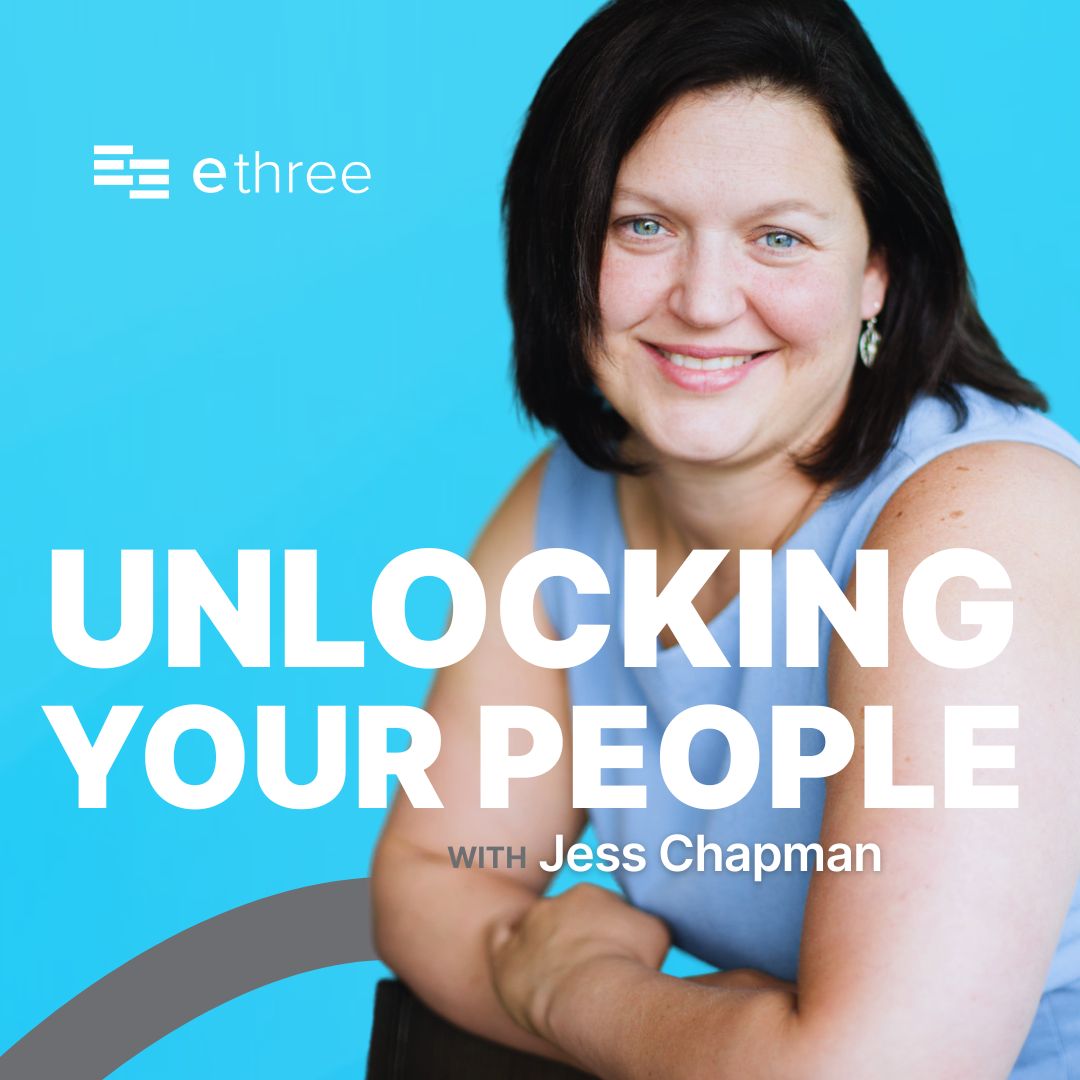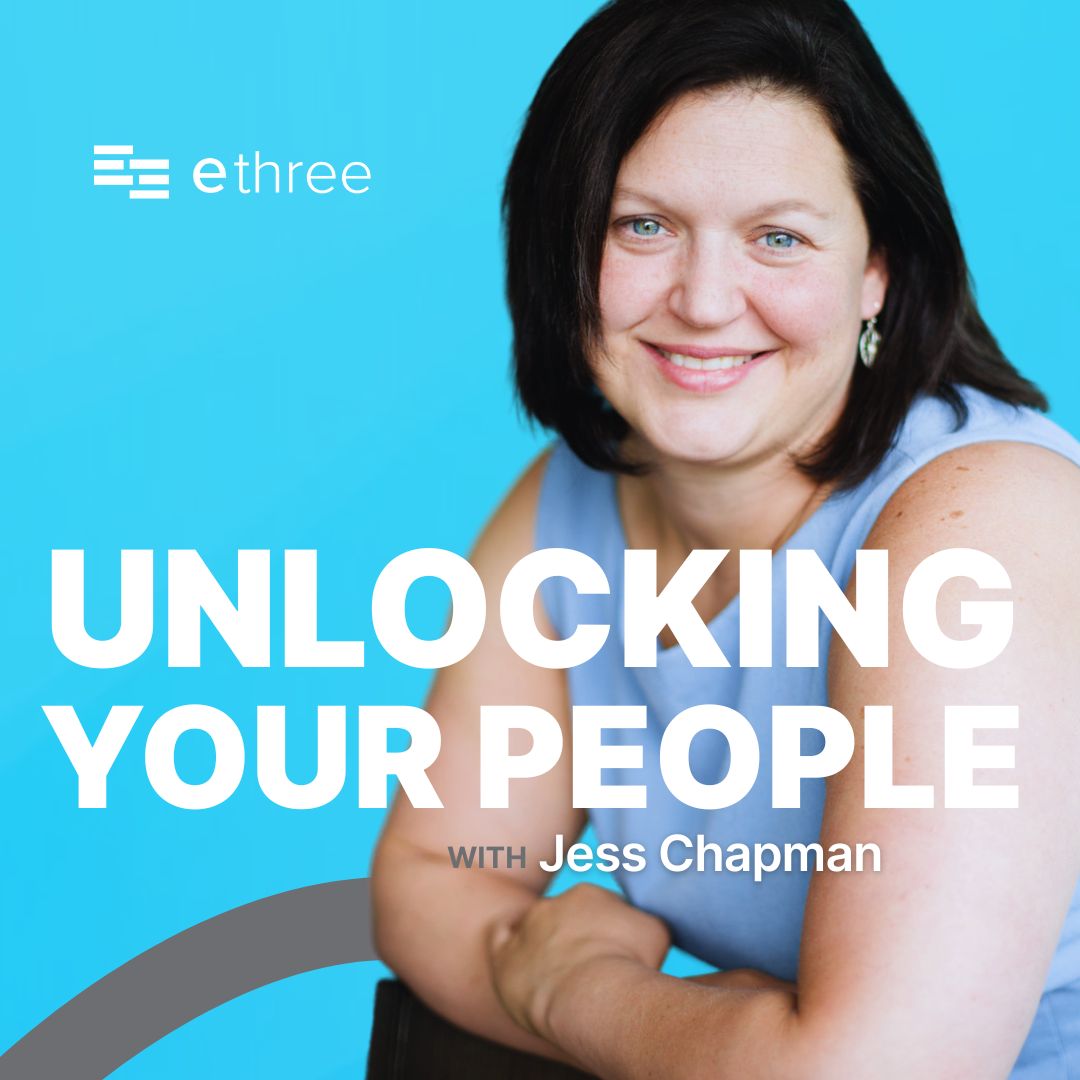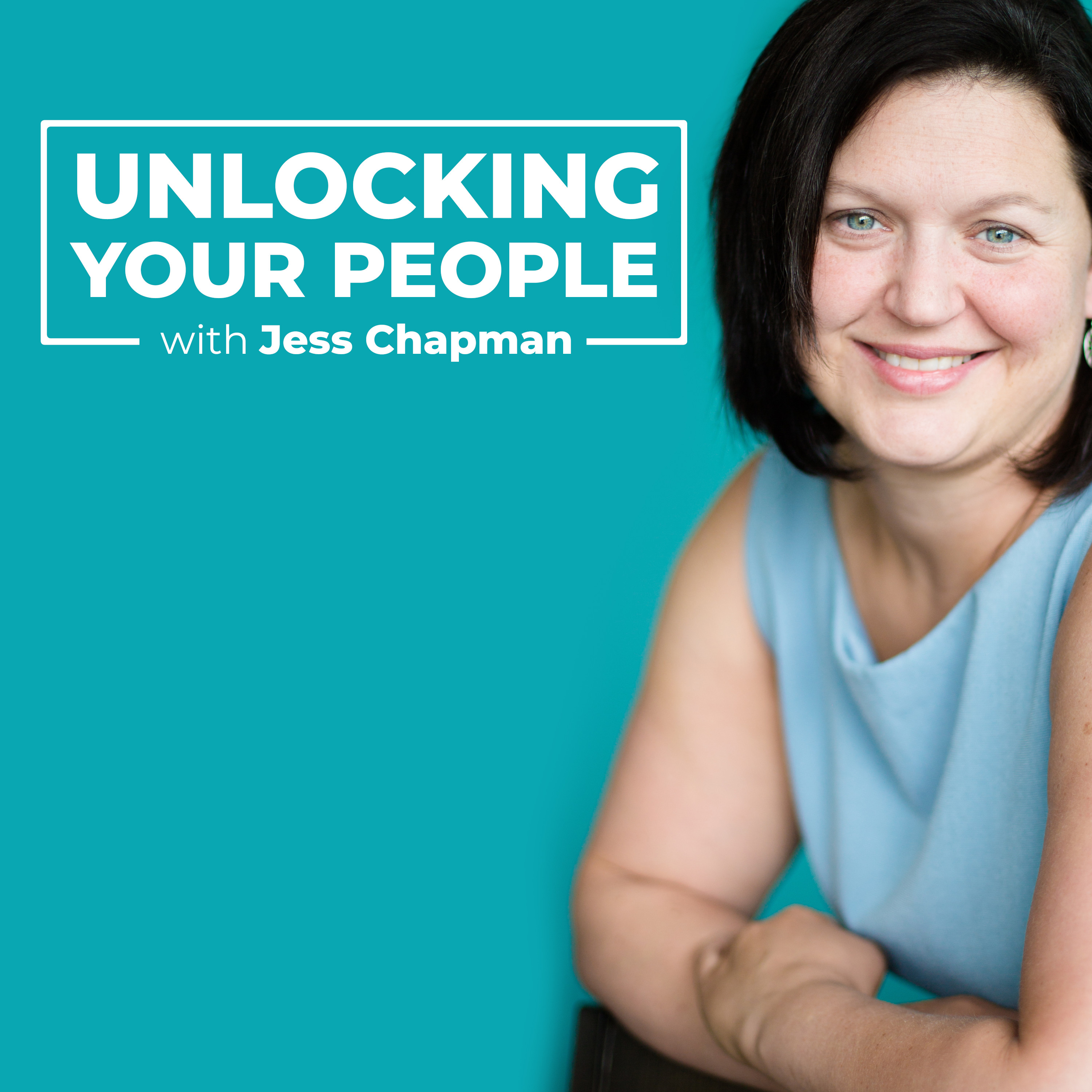Episode Transcript
[00:00:04] Speaker A: Hey, Jess, how's it going?
[00:00:05] Speaker B: Good.
[00:00:06] Speaker A: So, question of the day. Oh, right. You have this sack of questions.
[00:00:10] Speaker B: I sure do.
[00:00:12] Speaker A: Fire away.
Okay.
[00:00:14] Speaker B: There's a lot of them this week, so I'm gonna have to go through and take a wild pick. Are you ready for this?
[00:00:19] Speaker A: Yeah. Well, okay.
[00:00:20] Speaker B: Okay, get ready.
[00:00:21] Speaker A: I'm gonna get something really tangly.
Give me something. Give me something not too tangly. Okay. Okay.
[00:00:28] Speaker B: Not too tight. Okay.
[00:00:30] Speaker A: All right.
[00:00:31] Speaker B: This week' for you is we're a remote first company.
How do you build culture when no one's physically together most of the time? Which I think is something that a lot of companies are going through these days.
[00:00:44] Speaker A: Okay. Not tangly, but big. That's a big question.
Okay, so I will try and organize my thoughts on this one and some kind of coherent answer for you. First thing I will say, though, is ultimately, leading people and creating culture, I don't think is totally different. When you are a remote organization, the biggest fundamental difference is you have to be more intentional about what you do. Right. So if you think about being around each other in an organization, there's a load of things that you pick up because you're in the same space and you bump into people and you have corridor conversations and you create kind of those adjunct relationships because you sit next to someone in the cafeteria. Like, all those things happen by happenstance when we're in the same space. You can still make those things happen, but there's not the trigger of the space anymore. So this has to be something else that is the trigger. Right. And I actually read a really interesting chunk of nugget of research about networking, which was that actually your weakest? I'm terrible at remembering who writes all of these things. At some point, I have to put all that in the show notes because I never. I remember stuff and not who wrote it. But one of the things they were talking about was that actually your weaker relationships are better for networking because the networks are usually broader, and those people connect with you on different things for different reasons. So they're reaching out for a different purpose.
And so we lose some of that when we're not just bumping into one another in the same space. Right. But if you think about what culture inherently is, it is a set of train tracks. It is a set of guidelines about what's okay and not okay in an organization. It's just that when we're together, I see it more in action. I see people behave. I see my senior leadership team do things. And so it can be less tangible when we're kind of around each other all the time. So realistically, when you're thinking about remote, you're doing the same things, but you've lost the trigger. So we need to create the triggers. We need to be more intentional about it, and we need to be kind of clear about what it is we want from people. And I think in one of the earlier episodes, Tom talked about the importance of leadership presence.
Right. He was talking about how to engage the team at Wedgwood around.
Oh, this is the episode. So I'm gonna have to say, oh.
[00:02:57] Speaker B: Yeah, it is the episode. Yeah, you're right. Good catch.
[00:03:00] Speaker A: Yes. Okay. So Tom has just talked about the fact that he thinks leadership presence is important. And it certainly is. If you think about that whole conversation was about leaders are role models. We kind of set the tone on what good looks like for a lot of people. You can encode oh so much. And I'll talk about that in a second. But then the rest of the time I'm watching. I'm watching to see what's acceptable and what's not acceptable. And so if you are in an office, that leadership presence piece is easy. You show up. If you're not in an office, you need to create the mechanisms for people to see you, because otherwise there's no role modeling that takes place. Which is why it takes longer for culture to form. Same with relationships. Right. So where brain is wired to mirror people, there's such thing as mirror neurons in the brain. We, we see what other people are doing, we copy what other people are doing. Right. So if we're not consciously creating the space for that, it takes longer to form. So when you're thinking about culture, slightly separate to engagement. When you're thinking about culture, the values that you espouse need to be clear, and you need to find more ways to make them consciously talked about in an organization. So you can't put a poster on the wall because you don't have walls. Right. Which is not necessarily a bad thing because I'm not sure posters on the wall are necessarily what I did spouse anyway. But when do you talk about your values? How do you onboard people to your values? How do you describe what the behaviors of your organization are like? Recognition is a great one. What gets rewarded gets repeated. Right. So when we reward people, they get a dopamine hit in the brain. Dopamine says, yes, I feel good, but it also signals that that thing was important and I should do it again. So if you're trying to encourage corporate culture, behavior, actions, etcetera, recognition becomes a big part of that. So how and when are you recognizing people and making that recognition visible, comfortably visible, so that other people can say, oh, if I do that, that's what good looks like here. That's what I need to be at. Right. So those sorts of things can make a difference. And then how do you create virtual town halls, virtual group meetings, you know, the kind of combined Slack channels, team channels where there's more conversation and chatter as people, because that's also part of culture. How are you creating and fostering relationships between people that otherwise wouldn't necessarily have them? So in my organization we are fully remote.
On Fridays we have coffee happy hour. So at 3 o' clock in Newfoundland time, which is a bit earlier for everybody else across the country, if you are free that hour and you've got nothing in your calendar, we all just hop on with a cup of tea, cup of coffee, no alcohol, because we are in HR and just chat. And it's not like nothing. There's no task required, there's no agenda. It's not a meaning, it is just a reason to get together and have a conversation. Now what's interesting is if I don't go, people don't go, right? Because it's like, you're not in front of me, I'm not seeing you. If you start having a coffee chat in front of someone in the office, people will join in because they're right in front of you. If you make it a meeting in the tool, in the toolbox, unless someone starts the meeting, I'm busy, I'm at home, I'm doing whatever, I'm not likely to go. So you lose those communication touch points. So we have to make a point of having the meeting, encouraging people to go to meet like, and even calling a meeting. I shouldn't call it a meeting, but like go to coffee hour. It's fine to go to coffee hour. Take the time to go to coffee hour. Other companies we work with do this really well too and have like, I've got a one client who does random chats. So every. They have a much bigger team than we do, but they randomly set people up with people across some other part of the organization and they have an hour random chat month with somebody that they wouldn't normally work with and there's no purpose to it, it's just chat. Now I'll say to all of that there's some introvert somewhere listening to this thinking, I'd love to throw up right now because that's right. So for Those of us who are more social, more chatty, that's all great for the introverts in the world probably like working from home. Those kind of socially things are going to require more either parameters to make them comfortable or more explanation as to why they're important to encourage people to do or make them shorter. Like 20 minutes. Right. Like that's perfectly fin fine. But those sorts of things can help kind of fill in the gap. But there's no trigger when you take the space away. Right. So we have to create the mechanism for it. Most people's uncomfort level with doing this remotely is it just feels more awkward. Right. But awkwardness for me is often just a lack of practice. Like if I don't know why I'm doing something, then I'm like why am I doing this? And then if I'm not having to do it often, then it feels weird when I'm doing it. And there's no real purpose to it. Right. So you know, setting some of that. There's another client that we know who does to give it purpose. They do show and tell.
[00:07:26] Speaker B: Oh, so you can't.
[00:07:28] Speaker A: Whatever you want to talk about.
And if you don't want to present, you don't have to. But everyone shows up to show and tell. So you're still getting some of the interaction. You can ask questions, but it's on anything. So you can talk about anything that's relevant to you. So you think about all those conversations that happen in the five minutes before a meeting starts or the five minutes after in the corridor that we don't have anymore. How do you replace that? These are some of the sorts of things you could be thinking about in in terms of how you replace it.
So those things are more culturally specific. For me, a lot of culture is about defining good behavior, but the relationships thing is part of that. That is slightly separate to engagement. Right. So how do I ensure my remote workers are engaged is a slightly different question. And engagement is really about the same kind of behaviors, but just be more intentional about it. So does that person know why they're here? Do they understand their contribution? Are you making time for them to talk about what's important to them? Are they getting feedback and recognition on how they're doing? Tie it back to your values for cultural reinforc enforcement.
Are you giving them the tools and equipment to do their job? Nothing will annoy a remote worker more than technical issues, right? It's the second most annoying thing for people in an office, but it's almost the number one Annoying thing for someone who works remotely because that's their link to everybody else. Right. So the things that apply for engagement still apply for people working remotely, but you'll need to be more intentional about all of it because it won't just naturally happen in the same ways that people create relationships when they're left to their own devices.
Right. So we do have a short course on understanding the pillars of engagement that applies. We are currently in the process of revamping our leading virtual teams course because there's so much more you can put into it now. But if you've got any questions on any of that, just email us and we can have a chat about your particular situation, see what we can suggest.
[00:09:08] Speaker B: Amazing. That is a very robust. And. And it's a perfect answer, I think.
[00:09:14] Speaker A: And it might be worth. Just make a note for me.
Well, let's see if one of our clients who's fully remote can come and talk about how they do some of this. So we have a client that's fully remote and has been since they started working. Well, to be fair to them, they were partly in office. They had a team of people in an office in Newfoundland and then had a load of people working remotely, which I think is the hardest way to do it because then you've got kind of mixed bag.
But they have been really good since day one about setting everything up to work for a remote audience, how they do engagement in meetings for a remote group. And now they're all fully remote. They got rid of the office in Newfoundland and they do a like twice a year. They do like an in real life meetup and that kind of stuff. So they have some great nuggets to share on this topic.
[00:09:55] Speaker B: Wow, that's great. And I love what you said too about how it feels awkward at first because I mean, remember like during the pandemic when we were all forced to get on our zoom calls for the, you know, the first time and how much it felt strange and you didn't want to talk over somebody and it was really tricky. But now I feel like it's all kind of second nature.
[00:10:12] Speaker A: Right. It's way better. And it's practice wiring. Right. But that's the one thing I got to say. Cameras on.
But like, when you communicate, more than half of what you communicate to somebody is your body language. If I cannot see you, I do not fully understand you. So I understand that whoever designed these tools so that you see yourself, I mean, I get it. Like, I want to make sure I got no spinach in my teeth.
I didn't used to walk into meetings with a mirror and sit there in the meeting with a mirror, looking at myself or look at everybody else. Right. That's not how human beings work. So that's the awkward bit. Saying yourself is the awkward bit. If we could find a way to take ourselves out of the equation, we'd forget about that and we would have the same interactions that we would normally have. But if we don't see faces, we're losing a load of information when we communicate. So if you want to sustain teams, relationships, culture, particularly if you're having difficult conversations, please put your cameras on, because otherwise I'm not really getting you.
[00:11:10] Speaker B: Controversial. Controversial.
[00:11:12] Speaker A: I know you don't understand.
If you're eating, put your camera off. I don't. That's fine. I don't need to see. I don't need to watch you eat. That's perfectly fine.
But otherwise, I'm missing seeing you.
Yeah.
[00:11:26] Speaker B: Love that.
[00:11:27] Speaker A: Love that.
[00:11:27] Speaker B: Thanks, Jess.
[00:11:28] Speaker A: You're welcome.


